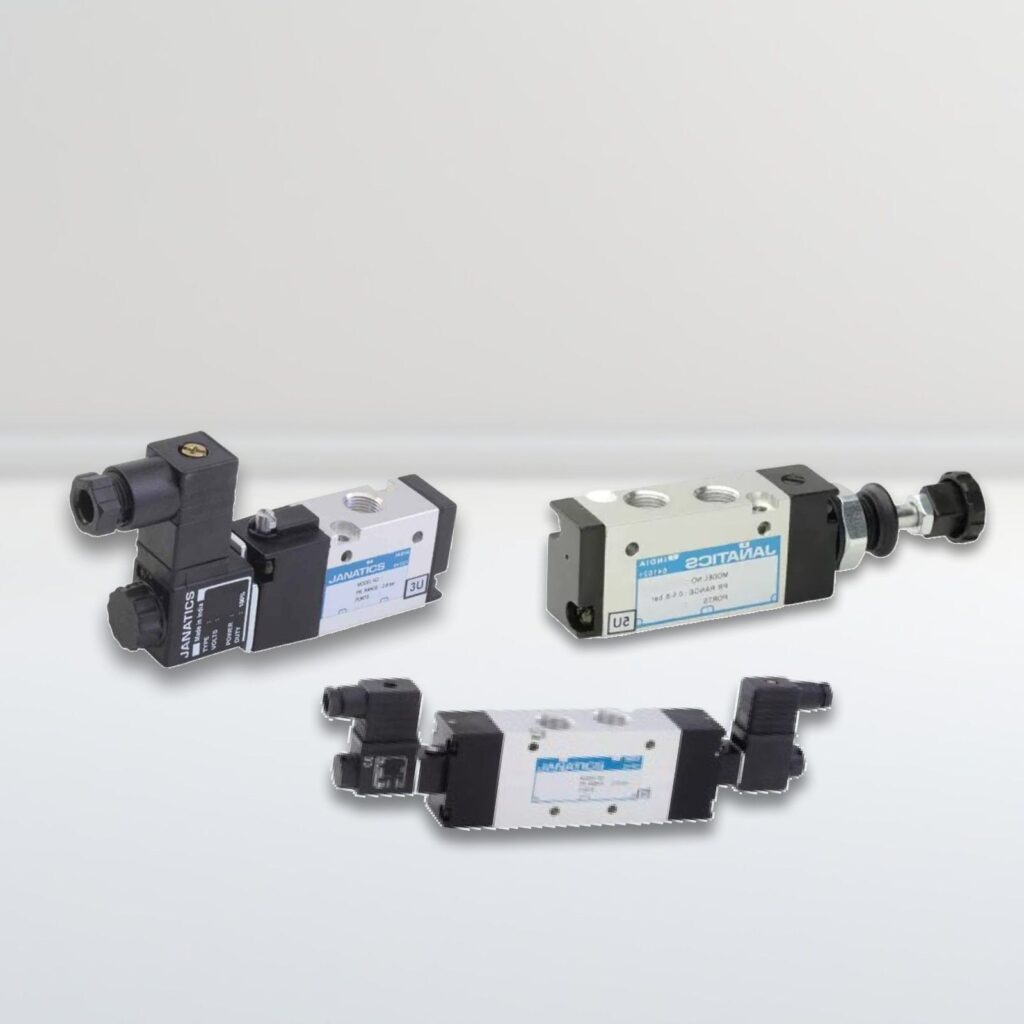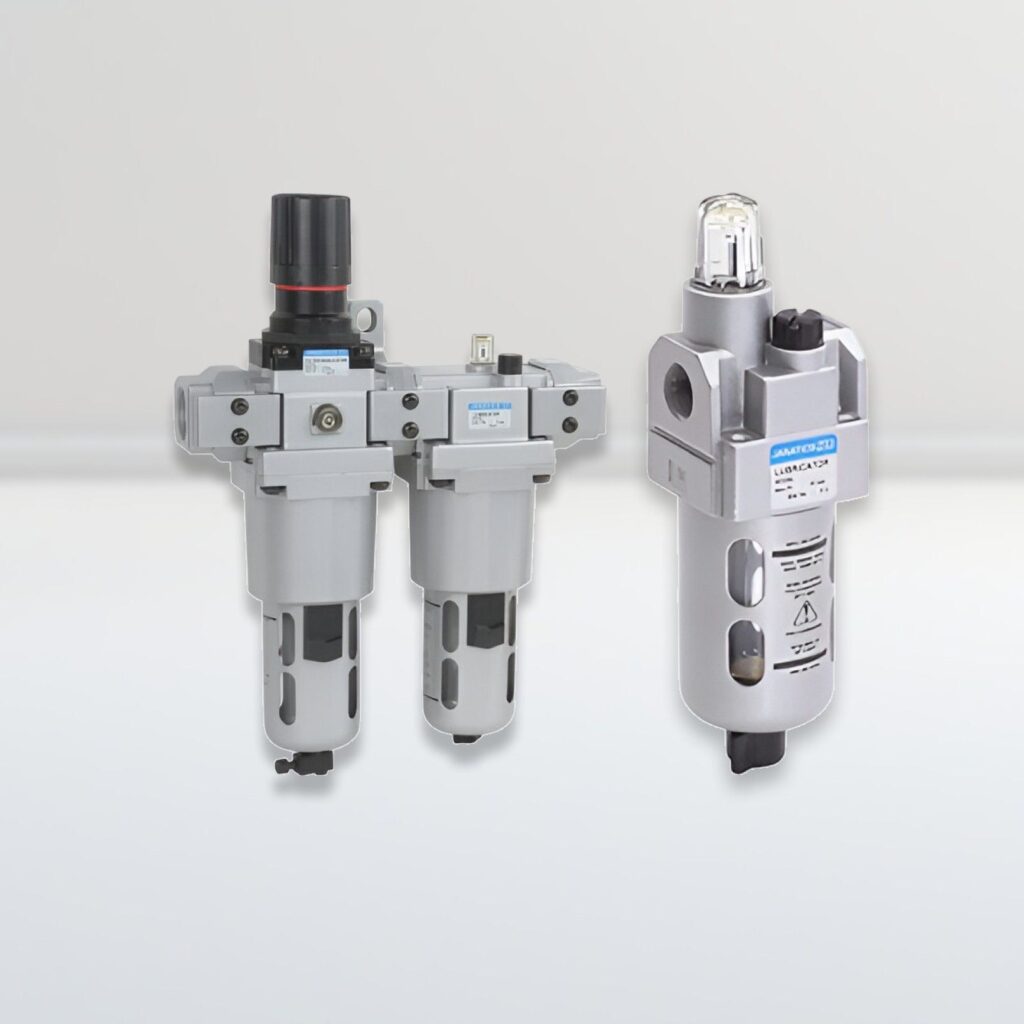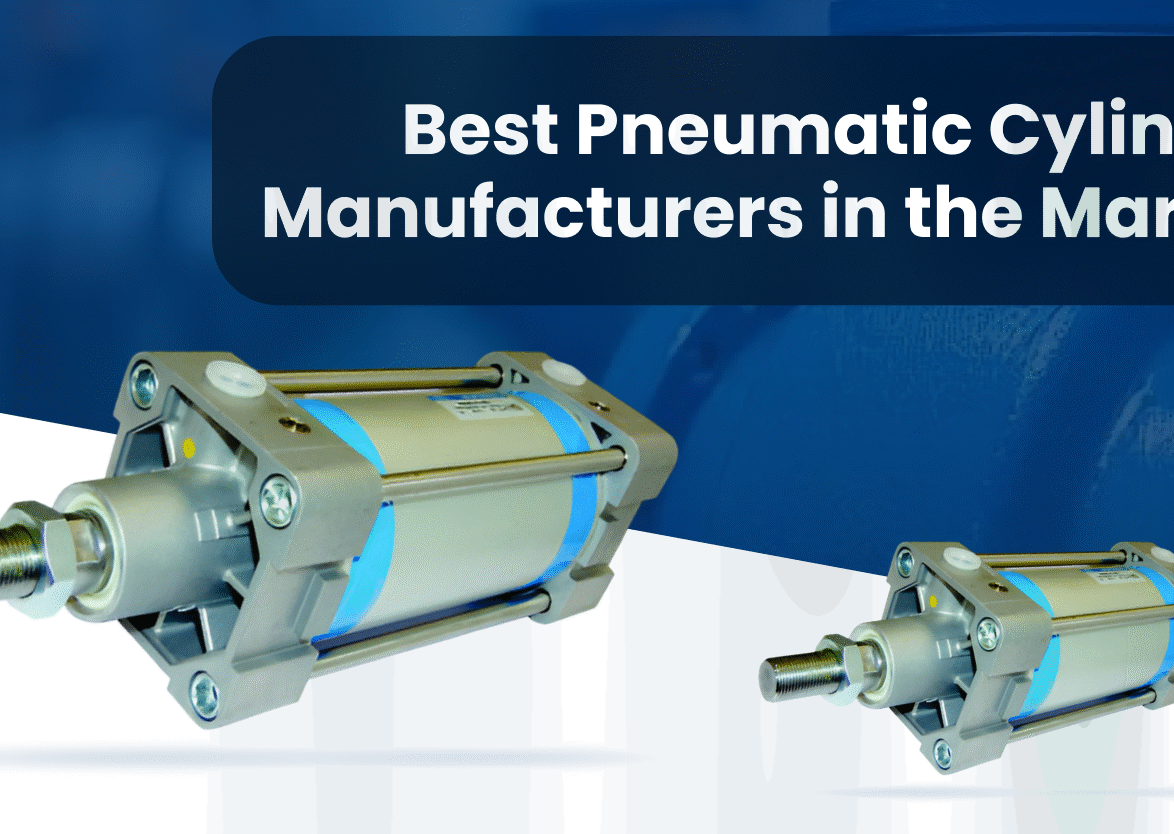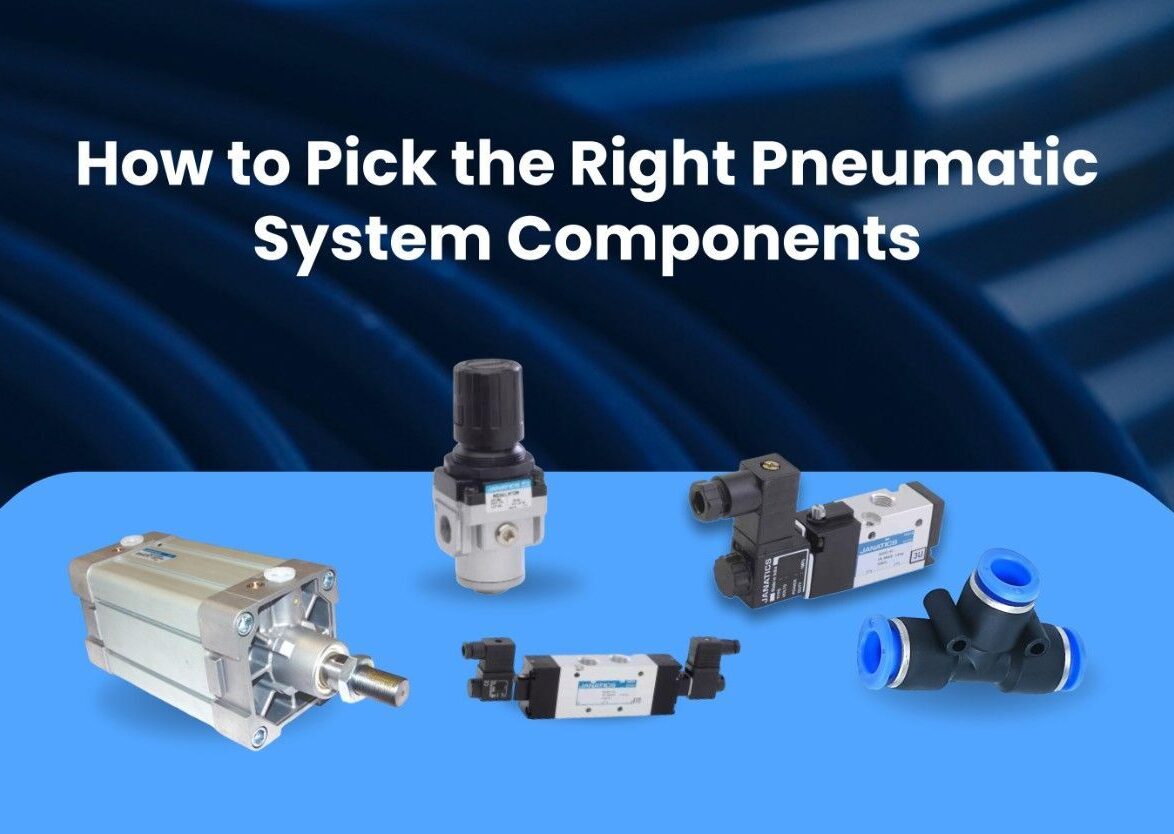Boost Your Automation ROI: Pneumatic Valve Solutions for Reliable, Efficient Production
Automation is only as strong as the core components driving it. Pneumatic valve solutions now sit at the heart of successful industrial automation, giving businesses a sharp edge in reliability, speed, and maintenance savings. Paired with essential elements like pneumatic cylinders, directional control valves, and air preparation units, these systems help boost performance and cut downtime for small and medium businesses.
When each part works together seamlessly, you see smoother production, higher product quality, and real uptime gains. As industries demand more efficiency and cost control, investing in the right pneumatic valve setup isn’t just smart—it’s necessary. Companies that make the move see real benefits on the shop floor, setting them ahead of the competition.
For businesses looking to optimize their automation, exploring the Pneumatic Cylinders Collection, the full range of Valve collection at NobleMart, and our selection of FRL Units for Pneumatic Systems offers a direct path to improved productivity and long-term value.
Pneumatic Cylinders: The Engine Driving Industrial Movement
Factories rely on constant movement for production to thrive, and pneumatic cylinders deliver that power behind the scenes. When you need speed, consistent performance, and ongoing cost savings, pneumatic cylinders stand out. They take compressed air and turn it into controlled motion, creating the muscle for countless automated tasks. From packaging to sorting and assembling, these dependable components are the force that keeps automated lines moving forward.
Core Advantages of Pneumatic Cylinders
Pneumatic cylinders allow industrial, warehousing, and workshop settings to reduce energy consumption and risk while increasing productivity.
Their main benefits include:
- Energy Efficiency: Pneumatic cylinders only draw compressed air when motion is needed. This saves power compared to electric or hydraulic systems that may run nonstop.
- Operator Safety: These devices avoid the fire risks of electrical components and limit injury potential with soft, controlled movements.
- Long Service Life: Well-made pneumatic cylinders resist wear, corrosion, and damage from dirt or moisture. This means less downtime and lower repair bills.
- Reduced Operating Costs: With fewer moving parts and simplified maintenance, pneumatic cylinders save time and resources throughout their useful life.
- Reliable Speed and Force: They deliver fast, precise movement every cycle—which is exactly what automation demands.
- Adaptability: Pneumatic cylinders serve everything from gentle food processing to heavy machine handling, making them the go-to choice for diverse industries.
Plant managers aiming to maximize output and minimize hassle will appreciate how these cylinders raise operational standards. As automation grows, choosing components proven for long-term value has never been more important. Explore the Pneumatic cylinder collection to find models tailored to any business need.
For more detailed insight on how pneumatic cylinders support various industries, see this comprehensive guide to their use in automation, packaging, automotive, and medical sectors.
Matching the Right Cylinder to Your Application
Not every factory runs the same, and neither should its pneumatic cylinders. The needs of the project will dictate which cylinder is best. Here’s a quick rundown:
- Single-Acting Cylinders: Use air to move in one direction—simple, cost-effective, and perfect for basic tasks like stamping or clamping.
- Double-Acting Cylinders: Use air for both extension and retraction, offering more control for repeatable, complex movements in robotics or pick-and-place applications.
- Rodless Cylinders: These slide along a track, saving space and delivering longer strokes in confined setups.
- Compact Cylinders: Short bodies with high force output, ideal for tight machine layouts.
When deciding, consider the following factors:
- Required Stroke Length: Longer strokes may need a rodless design.
- Force Output: Match cylinder size to the force demanded by your load.
- Mounting Space: Compact models fit in tight spots.
- Operating Environment: Choose materials suited for wet, dusty, or corrosive settings.
- Speed and Cycle Demands: Robust double-acting options serve high-speed lines best.
Selecting the wrong cylinder could cause delays, inefficiency, and unexpected costs. For a deeper dive into cylinder types and features, review this breakdown of pneumatic cylinder varieties and learn how to pick the right pneumatic cylinder for your process.
Each choice influences productivity and maintenance long-term, so investing the time now pays off quickly as lines move smoother and faster.
Mastering Flow and Control: The Role of Directional Control Valves
Directional control valves keep factory automation in check. These small but robust parts work as the “traffic controllers” in pneumatic systems, deciding how air flows and when cylinders move. When every second and every product counts, picking and matching the correct directional control valve to your application means smoother motion and fewer breakdowns. Let’s dig into making the right choices and how to keep valves running strong.

Choosing the Right Pneumatic Valve for Efficiency
Directional control valves shape how automation responds—quickly, reliably, and without wasted energy. The right valve configuration can mean the difference between tight control and major inefficiency. Start with your process demands:
- Type of Operation: Manual, pneumatic, and solenoid actuation all offer different levels of speed and automation. For instance, a simple production line might do well with a manual lever, while a pick-and-place robot calls for an electric solenoid.
- Number of Ports/Way: Choose from 2-way, 3-way, and 5-way valves depending on how many directions you need airflow to move.
- Functionality: Some lines need valves that hold position under pressure or switch states with small air signals.
Impact of Matching Valve Types
Matching the right pneumatic valve to your system trims energy use, stops air loss, and increases speed. Take the Push Pull Operated Mechanism for example. It’s made for simple, clear operations, like emergency stops or fast manual switching. These valves shine in setups requiring basic but solid “on-off” control. Meanwhile, automatic or remote-controlled valves best serve lines that run around the clock.
Valves must fit both the task and environment. High-moisture workplaces or food processing lines, for example, often need stainless steel bodies or special seals for clean, reliable use. A mismatch leads to wear, unwanted leaks, or even full system shut-downs.
If you’d like a fast breakdown of how directional valves steer system flow in automation, this quick guide shows core options and their uses in different industrial setups.
Best Practices for Installation and Maintenance
Proper installation and regular care extend your valve’s lifespan and keep operations lean. Follow these guidelines to reduce downtime and avoid costly repairs:
- Read Manufacturer Instructions: Always start with guides provided for your chosen valve; don’t improvise connections.
- Check Alignment: Valves installed off-center or under mechanical stress will develop leaks or fail early.
- Use Clean, Dry Air: Dirty or wet air shortens valve life and sticks spools.
- Tighten Fittings (But Not Too Much): Overtightening leads to cracks or stripped threads—hand-tight, plus a small extra turn, is usually enough.
- Routine Testing: Operate each valve through its range before putting the system online; watch for slow movement or stuck parts.
- Schedule Inspections: Mark your calendar for cleaning, lubrication, and seal checks. Early action saves money long-term.
- Replace Worn Seals Fast: Small leaks worsen with use; swap rubber or plastic seals before they go brittle.
Buyers who follow these practices build rock-solid reliability into their systems. It’s one of the easiest ways to get the most out of your pneumatic valves and stay ahead of downtime.
Want a deeper look at valve types and installation tips? Take time to review this comprehensive guide to directional control valves for both manual and automated setups.
Interested in more valve products for your next upgrade? See the full range of Valve products to match your needs and keep your factory moving.
Optimizing System Health: Air Preparation Units for Pure Performance
Pneumatic valves and cylinders only perform as well as the air that fuels them. Every business running automation knows breakdowns can crush uptime and budgets. This is where air preparation units—commonly called FRLs (Filter, Regulator, Lubricator)—step in as the silent guardians for your equipment, cleaning, regulating, and conditioning the air to give you lasting, top-level performance.

Key Components of Air Preparation Units: Filters, Regulators, and Lubricators
Each FRL component has a clear job in protecting pneumatic valve setups and keeping your system working like new.
- Filters capture dirt, dust, oil, and water before they can reach sensitive valves or cylinders. Use a filter whenever your compressed air is prone to moisture or particulates—this is frequent in older compressors or humid factories. Clogged or unclean filters quickly obstruct airflow, which might damage a precision valve or cylinder.
- Regulators keep the air pressure stable. In tasks where speed, force, or cycle timing matter—like automation lines or robotic assembly—the right regulator avoids uneven speeds and stops damaging surges from reaching equipment.
- Lubricants release an oil mist into the air. This is essential for tools or valves running at high speed, or whenever moving parts risk friction and wear. Some modern systems and clean environments may skip oiling, but most legacy equipment still runs smoother, longer, and quieter with clean lubrication.
For high-purity demands—like food, pharma, or electronics—choose filters with fine ratings and use only the regulator. Avoid using any kind of lubricant at all costs to avoid contamination. But for general manufacturing and rugged equipment, a full FRL Units Collection gives your entire line an edge.
If you want to break down each device’s role and its impact in depth, check out this Comprehensive Guide to Pneumatic Air Preparation.
Maintenance Routines for Peak Air Quality: Simple Checklist
Keeping air preparation units in top shape doesn’t have to drain your team’s bandwidth. A few regular checks pay off with years of reliable pneumatic valve and cylinder performance.
Here’s a checklist your crew can put on the wall:
- Check Filter Bowls: Drain water and empty trapped dirt weekly. If your air is dirty or the climate is humid, inspect daily.
- Replace Elements on Schedule: Swap out filters by manufacturer recommendations—usually every 6-12 months, or when airflow drops.
- Adjust Pressure Regularly: Confirm regulator settings before every major run or shift start. Look for creeping or unsteady gauges.
- Fill Lubricators (If Used): Top up oil levels before they hit empty. Use oil matched to your equipment specs.
- Inspect for Leaks: Scan connections for hiss or bubbling at every maintenance cycle. Tighten as needed.
- Test System Performance: Cycle equipment and watch for slow response, sticky movement, or uneven motion—all can signal dirty air or poor lube.
Following these routines keeps pneumatic systems protected, increases the lifespan of parts, and keeps your operation running at its peak. For more tips on air prep reliability, see The Principles of Pneumatic Air Preparation.
Well-maintained air prep equals confidence on your shop floor, helping every pneumatic valve do its job cleanly and without surprise downtime. For operators that want more specifics on what air preparation units can do for complex and large-scale systems, What is an air preparation unit? offers a detailed explanation along with helpful pointers.
Regular upkeep paired with the right Pneumatic FRL Units keeps automation profitable, minimizes big repairs, and makes cost control realistic even as demands change.
Conclusion:
Investing in quality pneumatic cylinders, directional control valves, and reliable air preparation units is the smart move for any business looking to drive results in industrial automation. These components work together to boost uptime, reduce breakdowns, and maintain high product standards, giving you long-term value and a clear return on investment.
Choosing the right partner who understands both the demands of your production and the strengths of each component delivers peace of mind. When you select trusted pneumatic valve solutions and proven air prep products, you protect your bottom line and empower your team with reliable, efficient tools.
Ready to take the next step? Buy a lubricator online from Noblemart or explore more options that suit your equipment needs. We offer trusted parts, reliable quality, and dedicated support to help grow your automation ROI. Thank you for reading—your feedback is always welcome. Visit Noblemart today and purchase the right products for your business!





Leave a Comment
Your email address will not be published. Required fields are marked *